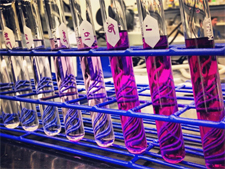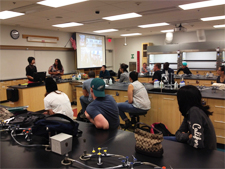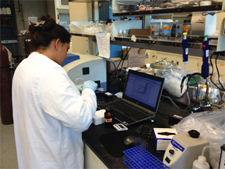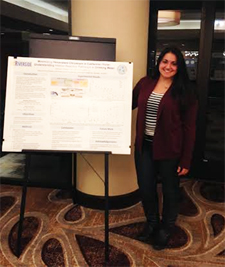Minimizing hexavalent chromium
Summary:
Chromium(VI), known as hexavalent chromium, is a highly toxic and soluble compound that has been widely observed in groundwater across California. A drinking water standard specific to chromium(VI) was proposed by the California Department of Public Health. The proposed low drinking water standard for chromium(VI) is estimated to pose great challenges for water systems to upgrade treatment approaches to meet the regulation. This research project advanced the mechanistic understanding of chromium(VI) conversion and formation pathways from water resources to treated drinking water, specifically by residual disinfectants and corrosion scales in water distribution systems. The research enabled the optimal design of treatment strategies and accurate prediction of treatment performance for chromium(VI) removal.
Investigator:
Haizhou Liu
Assistant Professor, Department of Chemical and Environmental Engineering
UC Riverside
Project description:
Chromium(VI), known as hexavalent chromium, is a highly toxic and soluble compound that has been widely observed in groundwater across California. It enters groundwater through improper industrial waste disposal as well as geological weathering of naturally occurring chromium containing aquifer minerals. As a major drinking water supply in California, especially in vast inland areas, the presence of chromium(VI) in groundwater threatens source water quality and poses public health risks.
Current EPA drinking water standards are only applicable to total chromium, which can be present as chromium(VI) as well as the much less toxic form of chromium(III) that can be a nutrient at low concentrations. However, a drinking water standard specific to chromium(VI) was proposed by the California Department of Public Health. The proposed low drinking water standard for chromium(VI) was estimated to post great challenges to California water systems to upgrade treatment to meet the regulation.
Available water treatment technologies normally transform soluble chromium(VI) to particulate chromium(III) before removing the solids. However, these treatment processes are not efficient to achieve the low concentrations that will be required. Subsequently, in water distribution piping systems, residual chromium(III) and chromium(VI) can be involved in multiple reactions that involve heterogeneous chemical oxidation, reduction, adsorption, and co-precipitation. However, these chemical processes that eventually impact chromium(VI) levels in finished drinking water are not understood yet.
The primary objective of this research project was to advance the mechanistic understanding of chromium(VI) conversion and formation pathways from water resources to treated drinking water, specifically by residual disinfectants and corrosion scales in water distribution system. We evaluated chromium(VI) transformation mechanisms over a broad range of typical groundwater chemistry conditions. Analytical methods were used to track changes in both total chromium and chromium(VI) to the very low levels that were being considered for regulations. The research enabled the optimal design of treatment strategies and accurate prediction of treatment performance for chromium(VI) removal.




Photos by Haizhou Liu & Michelle Chebeir
